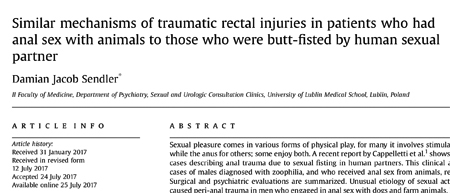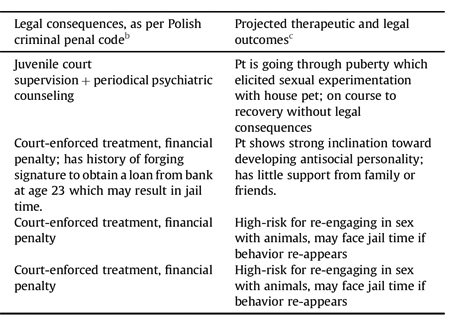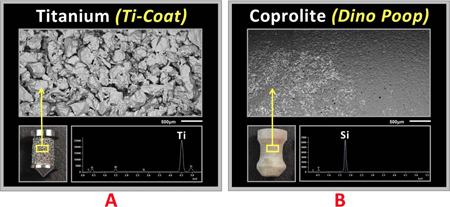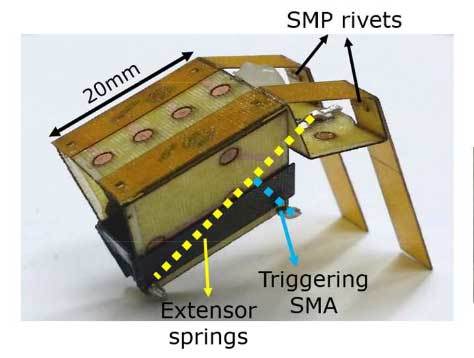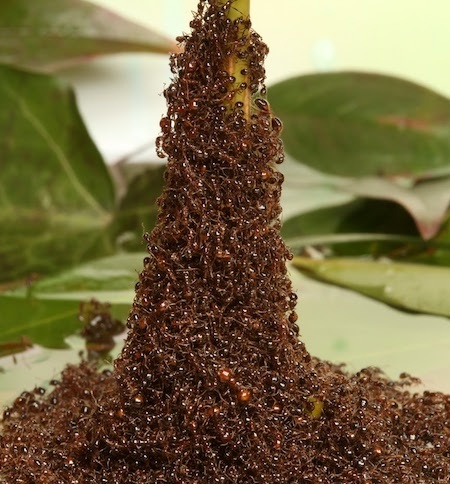Marc Abrahams's Blog, page 213
August 3, 2017
Do Interruptions Affect Quality of Work? (study)
 Dr. Cyrus K. Foroughi (U.S. Naval Research Lab) is, amongst other things, an expert on interruptions. In 2014, working with Nicole E. Werner, Erik T. Nelson and Deborah A. Boehm-Davis he was able to experimentally demonstrate that interruptions can affect the quality of work – in a negative way. Thus it’s suggested that the answer to the question posed in the title above can be, broadly speaking, summarised as ‘Yes’.
Dr. Cyrus K. Foroughi (U.S. Naval Research Lab) is, amongst other things, an expert on interruptions. In 2014, working with Nicole E. Werner, Erik T. Nelson and Deborah A. Boehm-Davis he was able to experimentally demonstrate that interruptions can affect the quality of work – in a negative way. Thus it’s suggested that the answer to the question posed in the title above can be, broadly speaking, summarised as ‘Yes’.
In the course of attempting to write an essay, 54 students from George Mason University were either interrupted (three times), or not interrupted. Those who were interrupted fared, overall, less well than those who weren’t.
“Our data suggest that interruptions lead to a reduction in quality for a complex, creative writing task. Quality scores for the essays were lower in both interrupted conditions. In addition, word count was reduced when the execution phase was interrupted.”
See: Do Interruptions Affect Quality of Work? in Human Factors: The Journal of the Human Factors and Ergonomics Society November 2014 vol. 56 no. 7 1262-1271.
BONUS : See the work of The Information Overload Research Group (IORG) whom, along with The Spaghetti Project , are hosting Overloaded 2017 in New York, October this year.

Ksenia Romanenko joins the Luxuriant Flowing, Former, or Facial Hair Club for Social Scientists
Ksenia Romanenko has joined the LFFFHCfSS – The Luxuriant Flowing, Former, or Facial Hair Club for Social Scientists. She says:
I’m a junior researcher involved in research projects on social anthropology, higher education research, and science communication. I guess my flowing hair often helps me to make a good impression during interviews and other moments of qualitative data collection.
Ksenia Romanenko, MS, LFFFFHCfSS
Junior researcher
National Research University “Higher School of Economics”
Institute of Education, Laboratory for University Development,
Moscow, Russia


August 2, 2017
Forensic Comparison: Sex With Animals vs Human-Butt-Fisting
The traditional method of literary analysis known as “Compare and Contrast” gets a workout in this newly published medical study:
“Similar mechanisms of traumatic rectal injuries in patients who had anal sex with animals to those who were butt-fisted by human sexual partner,” Damian Jacob Sendler, Journal of Forensic and Legal Medicine, vol. 51, 2017, 69e73.
 The author, at the University of Lublin Medical School, Lublin, Poland, reports;
The author, at the University of Lublin Medical School, Lublin, Poland, reports;
“Among zoophiles, the mode of harm occurs through blood-engorged, interlocked penis that causes tissue lacerations upon retraction from an anus. In people experimenting with fisting, repetitive stretching within anal canal and of external sphincter causes the internal injuries. The mode of physical stimulation explains the extent of injuries in fisters vs. zoophiles: in fisting, the pressure applied by hand is controllable proximally around and within anal sphincter, while penetration by the animal penis is unpredictable and occurs within the proximal anal canal. Forensically, the findings presented in this article describe a significant mechanism of injury in fisters versus passive zoophiles. These descriptions may aid in clinically differentiating pleasurable and pathological rectal stimulation.”
Here’s additional detail from the study:
(Thanks to Ivan Oransky for bringing this to our attention.)

July 31, 2017
Towards robotic goosebumps
“Although there have been many researches on artificial haptic-sensory skin and discussions of materials for facial expression, we can find few trials related to expressions on surface of robots.”
Explain a research team from Dr. Tomoko Yonezawa’s lab at Kansai University Osaka, Japan, prompting them to become one of the first teams worldwide (perhaps the first) to develop robotic goosebumps.
“The goose bumps are caused both of external stimuli such as cold temperature and internal state such as fear. The testbed of the goose-bump skin was implemented on the robot’s arm.”
The video above goes some way towards describing the project.
See: Involuntary expression of embodied robot adopting goose bumps in HRI ’14 Proceedings of the 2014 ACM/IEEE international conference on Human-robot interaction.

July 27, 2017
Why Use Dinosaur Poop to Repair Sheep Bones?
 Roy Bloebaum used fossilized dinosaur poop to repair sheep bones. The repair of bones can be an intricate undertaking. Dr. Bloebaum (and colleagues!) hoped to demonstrate how easy it can be to make iffy assumptions. They chose dinosaur feces fossil material to attract attention that could then be focused on certain intellectual aspects of bone repair. They describe this, in technical language, in a newly published study:
Roy Bloebaum used fossilized dinosaur poop to repair sheep bones. The repair of bones can be an intricate undertaking. Dr. Bloebaum (and colleagues!) hoped to demonstrate how easy it can be to make iffy assumptions. They chose dinosaur feces fossil material to attract attention that could then be focused on certain intellectual aspects of bone repair. They describe this, in technical language, in a newly published study:
“Transcortical or intracondylar? Which model is accurate for predicting biomaterial attachment in total joint replacement?” Roy D. Bloebaum [pictured here], Nicole T. Abdo, Aaron A. Hofmann, Richard T. Epperson, Raymond E. Olsen, and Ornusa Chalayon, Journal of Biomedical Materials Research Part B, epub 2017. They authors, at the Bone & Joint Research Laboratory, DVA SLC HCS, Salt Lake City, Utah, and the University of Utah, report:
Despite four decades of research on material and porous coatings intended for cementless fixation in total joint replacement (TJR), aseptic mechanical loosening unrelated to particulate disease remains a concern….
Porous-coated commercially pure titanium implants (Ti-Coat) were from Thortex Inc., Portland Oregon and were used as the material to test the hypothesis (control). Commercially pure titanium has been shown to provide successful attachment clinically in TJR. Coprolite implants, from David Gillette with Utah State University, commonly known as petrified dinosaur poop (Dino), were used to establish a dramatic understanding that even this unique material (which would never be used in TJR) might demonstrate that bone could hypothetically bridge a 500 mm gap at the transcortical location, but possibly not at the weight-bearing intracondylar location….
In conclusion, the results of this investigation emphasize that biomaterial scientists, manufacturers, investigators, and orthopedic surgeons should be aware of the inferior healing properties of cancellous [the inner, spongily-structured, portion of] bone as compared to cortical [the outer, more-compactly-structured portion of] bone and how these results suggest a false-positive nature of the transcortical model in TJR. The results showed that even petrified dinosaur feces could be mechanically stable in the transcortical model.
Here are further details from the study:
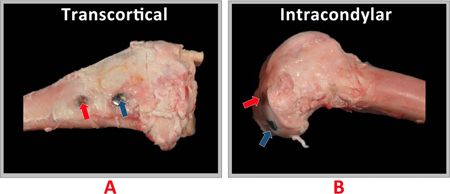
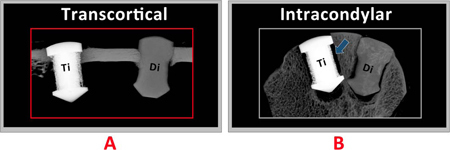
(Thank to Donald W. Howie for bringing this to our attention.)

Sad News: Daedalus (David Jones) is gone
We’ve just seen reports that our friend David Jones — best known in the science world as “Daedalus” — died. “Daedalus” was the name of the column David created and wrote, in which he did something that, as far as I am aware, was a unique way to make people laugh, then think.
Each Daedalus column would describe an imagined invention. Usually there would be something quite intentionally wrong in the details — a violation of some law of nature, typically — but in a way that was not immediately obvious. The greatest pleasure, should you the reader care to indulge, came in figuring out what exactly made that invention so very odd or impossible. (He waxed on, a bit, about one of his favorite specialties — perpetual motion machines — in a 1983 piece in New Scientist.)
The column ran for many years in New Scientist magazine, and then moved to Nature. Some of the best Daedalus columns were collected and made into two books: The inventions of Daedalus: A Compendium of Plausible Schemes; and The Further Inventions of Daedalus.
David was fond of pointing out, later in life, that many of the ideas he presented in the column accurately foreshadowed things later honored with Nobel Prizes, and a few with Ig Nobel Prizes. That and other musings are in David’s book The Aha! Moment.
Wikipedia has a partial summary of some of the things David did. Better: Conor Lawless visited David in 2010, then produced a writeup with lots of photos.
The photo here shows David at the 2001 Ig Nobel Prize ceremony. He was not in the best of health, having lost most his ability to walk — but said he would come to demonstrate to himself and the world that he could still do things he wanted to do. David traveled from his home in England to the Ig Nobel ceremony at Harvard University, in the US (and that was in the weeks just after the September 11 attack on New York — travel was not simple for anyone).
In the ceremony, David did one of the first 24/7 lectures. This photo shows that moment. You can read his words, and see video of his actual performance.

While David was in town, he and I and Jerry Lettvin and our families had dinner together. The meal featured a spectacular competition: David Jones and Jerry Lettvin — two of the most inventive, science-loving minds on the planet — gleefully shooting each other’s musings full of holes.

Towards a robotic jumping flea (new study)
A South Korean research team, Gwang-Pil Jung and Kyu-Jin Cho, (School of Mechanical and Aerospace Engineering/Institute of Advanced Machines and Design, Seoul National University) and Hong-Cheol Choi (Department of Physics and Chemistry, Korea Military Academy, Seoul) have made progress towards the development of jumping flea robot.
“Inspired by the relationship between leg compliance and jumping performance in the false stick insect, this paper describes how variations in leg compliance and jumping direction affect the performance of a flea-inspired jumping mechanism.”
“Our flea-inspired jumping mechanism […] performs take-off with bent legs […] The legs maximally bend in the acceleration phase, and when take-off happens, the legs remain bent. After take-off, bending and unbending of the jumping legs repeats for a while, then reduces gradually owing to damping of the legs.”
The paper doesn’t specify how high the microbot can jump, but the extensors have a spring coefficient of 280 N/m.
See: The Effect of Leg Compliance in Multi-Directional Jumping of a Flea-Inspired Mechanism, which is awaiting print publication in Bioinspiration & Biomimetics, April 2017.
Note: The research was funded by the Defense Acquisition Program Administration under the grant number UD130070ID.

July 25, 2017
The Effect of Sex on Heart Rate Variability at High Altitude [research study]
The word “sex” can to refer to gender, rather than sexual activity. Perhaps disappointingly, that seems to be the case in this medical study:
 “The Effect of Sex on Heart Rate Variability at High Altitude,” Christopher John Boos [pictured here], Emma Vincent, Adrian Mellor, John O’Hara, Caroline Newman, Richard Cruttenden, Phylip Scott, Mark Cooke, Jamie Matu, and David Richard Woods, Medicine and Science in Sports and Exercise, epub July 20, 2017.
“The Effect of Sex on Heart Rate Variability at High Altitude,” Christopher John Boos [pictured here], Emma Vincent, Adrian Mellor, John O’Hara, Caroline Newman, Richard Cruttenden, Phylip Scott, Mark Cooke, Jamie Matu, and David Richard Woods, Medicine and Science in Sports and Exercise, epub July 20, 2017.
The authors, at Poole Hospital NHS Foundation trust, Poole; Bournemouth University, Bournemouth; Leeds Beckett University; Defence Medical Services, Lichfield; James Cook University Hospital, Middlesbrough; Wansbeck General and Royal Victoria Infirmary, Newcastle; and University of Newcastle; all in the UK, report (we added the bolding emphasis):
There is evidence to suggest that high altitude (HA) exposure leads to a fall in heart rate variability (HRV) that is linked to the development of acute mountain sickness (AMS). The effects of sex on changes in HRV at HA and its relationship to AMS are unknown.
METHODS: HRV (5-minute single lead ECG) was measured in 63 healthy adults (41 men and 22 women) aged 18-56 years at sea level (SL) and during a HA trek at 3619m, 4600m and 5140m respectively. The main effects of altitude (SL, 3619, 4600 and 5140m) and sex (men vs women) and their potential interaction were assessed…
This particular paper is distinguished by the advanced quality of the writing. The wording at the end of the paper’s abstract is so very concise that it approaches being poetry:
Conclusions: Increasing HA leads to a reduction in HRV. Significant differences between men and women emerge at HA. HRV was not predictive of AMS.
(Thanks to Adrian Smith for bringing this to our attention.)

Bike riding with up/down and left/right swaps
These two videos show two related experiments that demonstrate some very weird things the human brain can do. The first, newer video shows Destin (the creator of the SmarterEveryDay videos) learning to ride a bike in which the left/right turning machinery has been reversed:
The second shows the Erismann/Koehler experiment in which a person learned to navigate the world while wearing special glasses that make up into down (and down into up). The bicycle part comes very near the end of the video, as a culminating achievement:

July 24, 2017
Three simple rules for building a tower, if you are a fire ant
Ig Nobel Prize winner David Hu and colleagues explain the simple rules that fire ants use when they build a tower-of-fire-ants. They explain in a new study:
“Fire Ants Perpetually Rebuild Sinking Towers,” Sulisay Phonekeo, Nathan Mlot, Daria Monaenkova, David L. Hu, Craig Tovey,” Royal Society Open Science, vol. 4, 2017, 170475.
In the aftermath of a flood, fire ants, Solenopsis invicta, cluster into temporary encampments. The encampments can contain hundreds of thousands of ants and reach over 30 ants high. How do ants build such tall structures without being crushed? … Here, we present models of the shape of the tower and its rate of growth. In our past work on raft construction, we found ants followed three rules, which yielded accurate predictions for raft growth rate. These rules are as follows:
1. Do not move if ants are on top of you.
2. If atop other ants, repeatedly move a short distance in a random direction.
3. Upon reaching available space adjacent to non-moving ants, stop and link with them.
4. The top layer of the tower is not stable unless there is a complete innermost ring of ants gripping each other around the rod.
We include the fourth rule based on our observations.
Here’s further detail from the study:
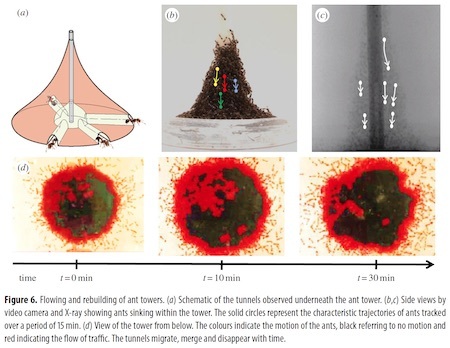 Sarah Zielinski has an especially nice writeup of this writeup, in Science News, with added video.
Sarah Zielinski has an especially nice writeup of this writeup, in Science News, with added video.
The 2015 Ig Nobel Prize for physics was awarded to Patricia Yang, David Hu, and Jonathan Pham, Jerome Choo, for testing the biological principle that nearly all mammals empty their bladders in about 21 seconds (plus or minus 13 seconds). They describe that research, in the study “Duration of Urination Does Not Change With Body Size,” Patricia J. Yang, Jonathan Pham, Jerome Choo, and David L. Hu, Proceedings of the National Academy of Sciences, vol. 111 no. 33, August 19, 2014, pp. 11932–11937.

Marc Abrahams's Blog
- Marc Abrahams's profile
- 14 followers


